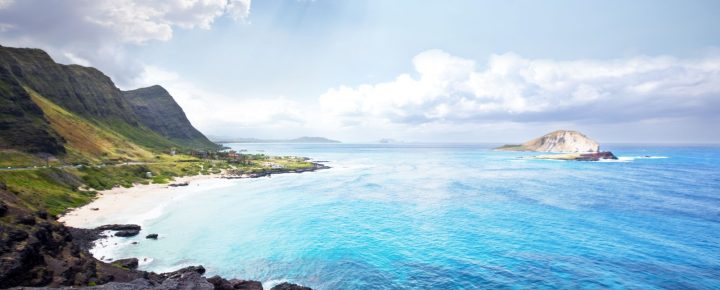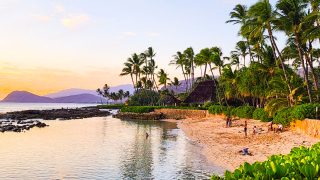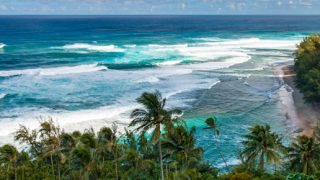The Hawaii State Legislature believes that establishing a visitor impact fee of $50 in Hawaii would be a significant and effective way to raise additional revenue to offset visitor impacts and ensure a healthy environment for future generations. This is according to Senate Bill SB304, which returns to the 2024 regular legislative session that begins today and runs until May.
In summary, the bill seeks to establish the visitor impact fee program within the Department of Land and Natural Resources (DLNR) effective July 1, 2025. It provides for DLNR to collect “a fee from visitors for a license to visit a state park, forest, hiking trail, or other state natural area. Once paid, access is granted for one year.
From Visitor Impact to Climate Impact: Hawaii’s Fee Rebranded.
In the aftermath of the devastating Lahaina fire in Maui, Hawaii Governor Josh Green revised the concept around the $50 Green Fee, which until then was known as the Visitor Impact Fee. This fee, initially proposed to generate hundreds of millions annually, aims to address the challenges posed by the state’s tourism-related infrastructure and also to boost firefighting efforts. However, previous attempts to implement such a fee have faced constitutional and logistical hurdles and have required reworking.
The evolution of the $50 Hawaii visitor fee proposed.
Initially, Governor Green proposal a broad visitor tax. That dates to his run for Hawaii governor. But that faced legislative and other obstacles, prompting a transformation into a tax solely on the use of Hawaii state beaches, parks, and facilities. The idea once conceived of assessing the fee through airlines or accommodations was abandoned, largely due to constitutional concerns. The restructured fee on state parks, beaches, or other facilities was met with uncertainty about its effectiveness and enforceability.
Plans have been to issue permits or licenses to visitors either online through a web site or app or through stores. That remains to be worked out.
Hawaii challenged in appropriate use of visitor funds.
Hawaii has a history of struggling with the effective use of visitor (and resident) taxes and fees, with results often falling short of intended goals. The USA’s highest accommodation taxes, paid by visitors (and traveling residents as well), raises questions about its utilization. The visible lack of reinvestment in critical tourism infrastructure, from parks to airports, remains a concern, especially when compared to other renowned vacation destinations worldwide.
Impact on visitor perception.
As Hawaii contemplates reintroducing the Green Fee by any name, concerns arise about the potential negative impact on visitors. Many have voiced dissatisfaction with previous fee proposals, viewing them as an additional financial burden. As Maui strives to achieve a visitor resurgence after the Lahaina fire, the imposition of such a fee could be met with resistance.
Funding Hawaii firefighting efforts.
No one questions the need for better firefighting in light of both the Maui fires and the awareness that similar fires could present themselves with frequent droughts that Hawaii suffers. Governor Green justifies the new Green Fee by emphasizing the need for additional funding for such firefighting efforts. The funds are intended to support the hiring of more firefighters, acquiring equipment, and financing investigations related to incidents like the Lahaina fire. However, skepticism prevails regarding the allocation of funds to a “special fund” and the state’s ability to responsibly manage these financial resources.
Critical need for firefighting and for a state fire marshal.
Hawaii’s firefighting efforts face challenges, most notably the continued absence of a state fire marshal. That position was eliminated decades ago. This year, however, the legislature will address a number of bills aimed at restoring a state fire marshal position.
As Hawaii considers the revival of the $50 Green Fee.
The state grapples with finding effective ways to fund both critical infrastructure improvements and firefighting efforts. The environmental impact fee proposal, while well-intentioned, faces skepticism based on Hawaii’s poor track record in managing visitor-related funds and addressing pressing issues.
SB304_HD3_Hawaii-Visitor-Fee-Proposed






They’ve already been called out for mismanagement of the fees and taxes they collect. If you think $68 million is going to go to beaches and parks you’re sorely mistaken. It goes into the black hole of the state coffers and mixes around in the general fund only to be siphoned off to pay the ballooning liabilities of all the state workers and social programs. The rest is spent to strengthen the one party regime’s stranglehold on the state and the minds of its voters. There’s nothing like your money being forcibly taken from you and then having it used to undermine you.
Last year 2023, I brought my family to Hawaii and spent well over $30,000 apparently a lot of charges and taxes were included.
Therefore this year we will not be enjoying the beautiful islands, instead we are flying to Thailand where it’s alot cheaper for rental cars, hotels and the country does not charge a vacation tax or a entry fee even if one is only visiting for two weeks.
I’m sure it’s necessary because all the other ways of gouging tourists have been implemented.
Its amazing that there is more work on miscellaneous future fees, and little being done immediately to help those fire impacted humans.
The politicians want the tourist money, but not the tourist.
Simple math: Increase car, hotel, beach parking, airport and tax “fees”
so that the tourist is paying double, compared to five years
ago. Double the income, cut the number of tourists in half, end
up with the same amount of money, with half the tourists.
It’s time for an outside audit of corruption in Hawaii.
That is discrimination. Why on earth would they try to eliminate tourists if they rely on tourism?
I have visited many times. This $50. Fee is a very bad idea. I live in a very tourist city, Victoria B.C. Canada and we try to do everything to encourage tourism on Vancouver Island as Covid made it very apparent how our city depends on that revenue. With the complexity of taxation, surely a “green tax” can be part of the tax structure through hotel, transportation and other tourist industries. This tax cost can be passed on and far more palatable than a stand alone fee. Hawaii is evidently suffering from a tourist PR problem. The levels of Government should be careful as the highest revenue earner in the Islands is tourism. Imagine if nobody came.
Talk about “passing the buck” and “biting the hand that feeds one”, now our 50th State dependent on air and sea transport for survival, has Kona, Honolulu, Lihue and Kahului Airports all in need of major repair! What has happened to the $B’s collected in Tourist Spending Receipts, the Governor Ige grab of County Hotel Tax Revenue for the State General Fund? I certainly respect the natural beauty of what is Hawaii, but it is not Tourists leaving cars to be stripped on the roadsides, Refrigerators and all manner of cast offs, this is Locals! Endemic to the problem is One Party Rule, Governor Green not the answer.